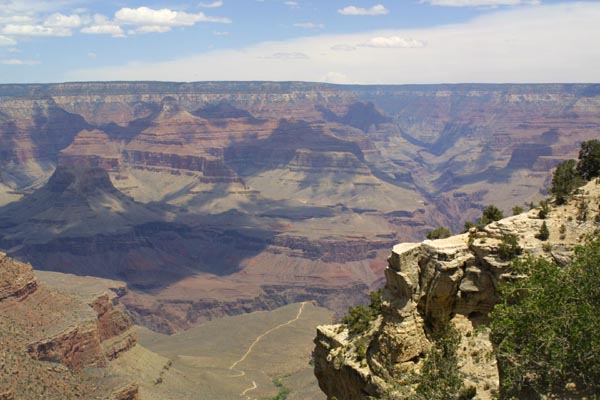
|
A pulpit of rock juts out over the canyon. I am amazed that there
are not some tourists perched on it.
Below:
The way down looks none too comfortable. No wonder Cortez and his men decided
to go around the canyon when they first saw it in the 1600's. |
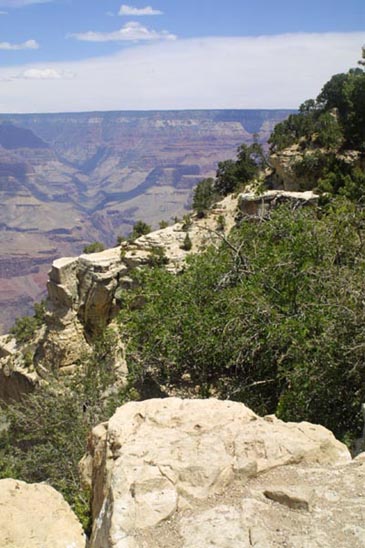
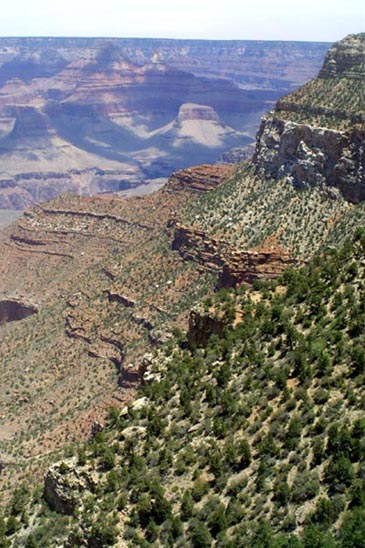
|
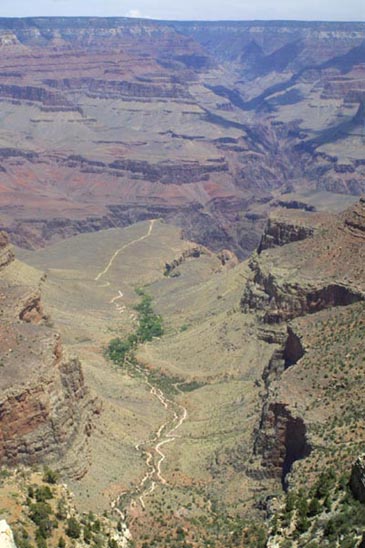
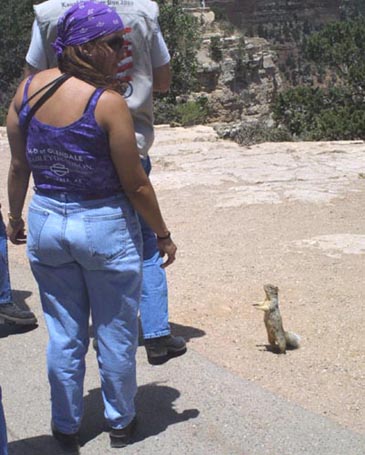
A beggar plies his trade on an unwary tourist. This is common in all of
the parks. I have seen it in Yellowstone, and Zion. It is illegal to feed
them, but many succumb to the obvious appeal.
Some patches of green can be seen at left, near a
dried up watercourse.
|
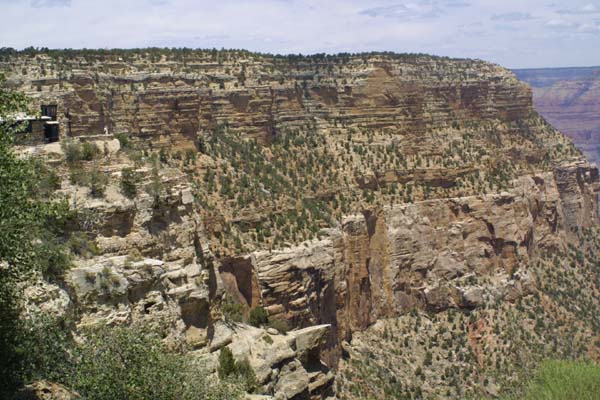
|
The Artists Studio can be made out at the far left of the photo. It
sits along the edge of the cliff face, actually sticking out a bit. |
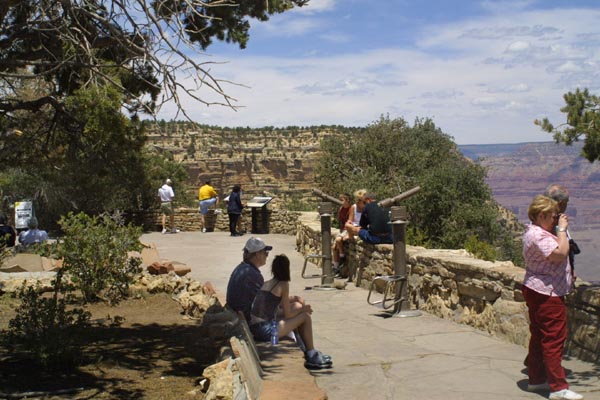
|
Tourists at the edge of the canyon, in one of the many rest stops,
and scenic overlooks. |
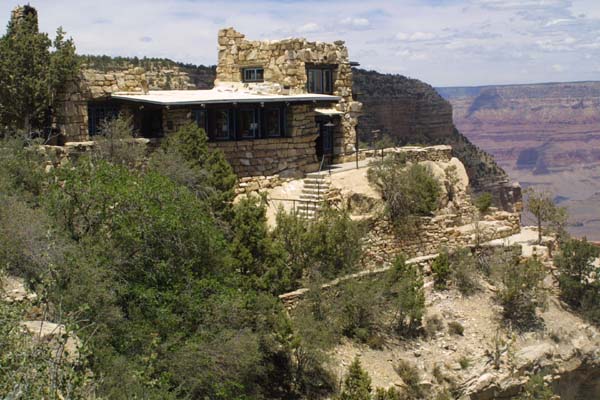
|
The famous Artists Studio, built in the twenties, and donated to the
park by the family who lived in it. They were allowed to remain in residence
until the last remaining member passed on. |
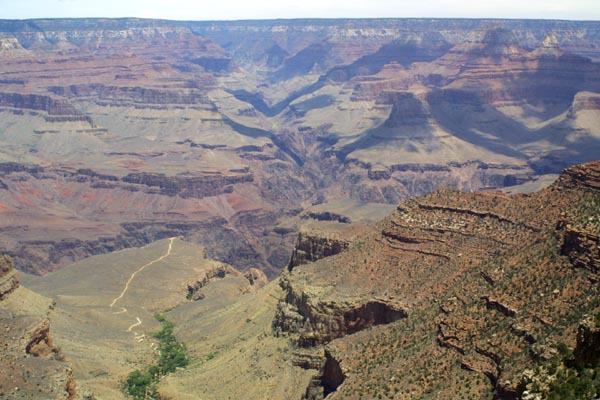
|
For all of it's undeniable beauty, Grand Canyon is a harsh and unforgiving
place to live. Water is scarce, and the heat can be truly lethal. This is
not an environment that favors the weak. |
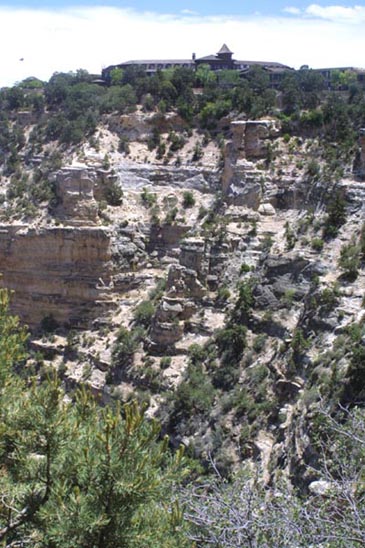
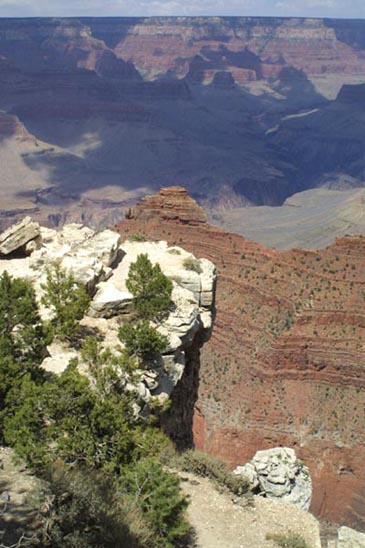
|

|
Just under the rim of the canyon, ravens and a few condors make their
homes in little hollows in the rock. |
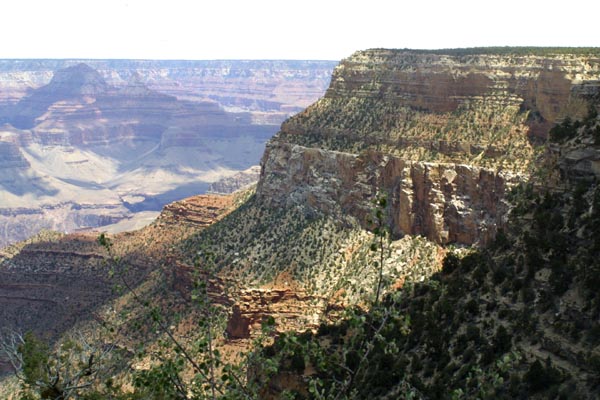
|
More of the banded and sparsely vegetated walls for which the canyon
is known. |
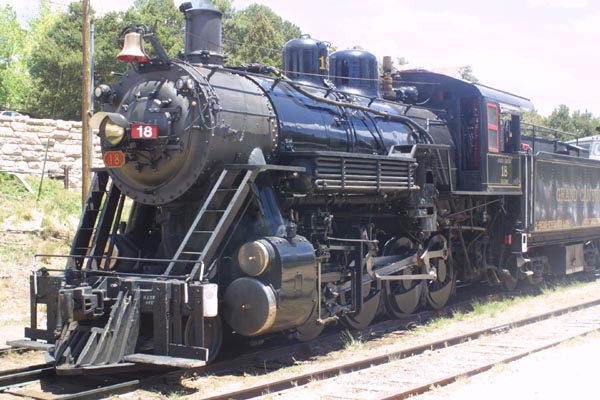
|
The steam train from Williams, Az. Williaims has been around a long
time, and was one of the original road towns along Route 66, back in it's
glory days. As with most of the road town, Williams fell on hard times,
when the old road was bypassed. The Williams section has the distinction
of being the last active section of Route 66 to be bypassed. Williams is
now remaking itself as a gateway to the canyon. |
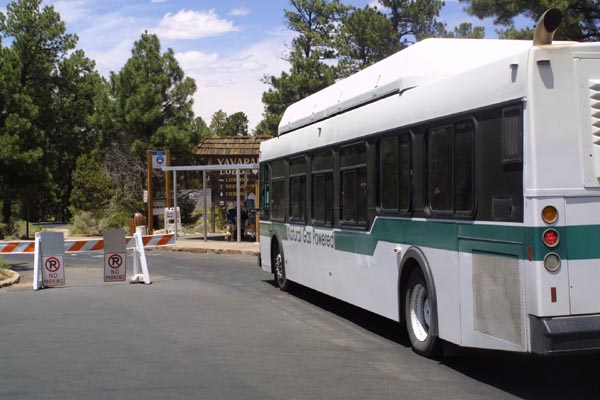
|
LP powered busses do not pollute, and go all over the park (well,
mostly). They are air conditioned, and the drivers are friendly, knowledgeable,
and act as tour guides, of sorts, describing and explaining the terrain through
which they take us. Car addict, and motor enthusiast that I am, I never drove
throughout my stay in the park. |
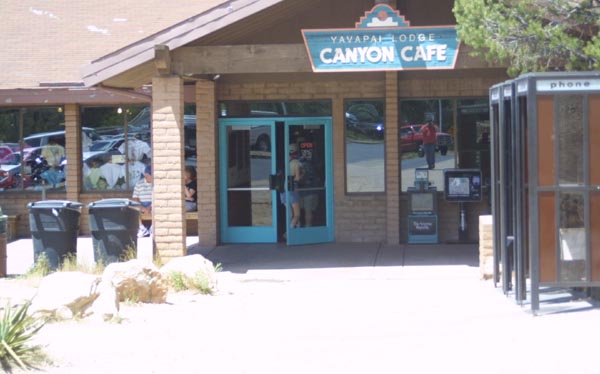
|
The Canyon Cafe, attached to the Yavapai Lodge. The cafe was nice
and had reasonable prices (unlike the super market in Canyon Village). The
rooms were very comfortable. Ours were not in this building, but were in
satellite structures up the road. They were comfortable, and modern, not
at all "rustic". We even had cable T.V., though I am happy to say, we made
little use of it. |
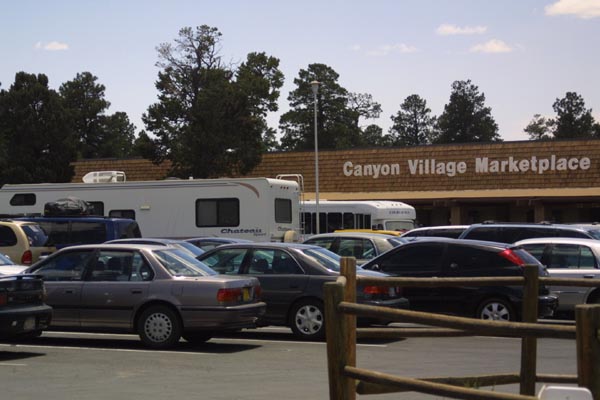
|
Some people moan and complain about the development of the park, but
I was very relieved to see it. Stores, inns, motels, lodges, parking, and
restaurants were concentrated at a few strategic locations, the rest was
left alone. I parked my car in this lot, and left it for four days, never
needing it until it was time to go. Busses, and trails lead all over the
rim of the park, and more trails lead to the bottom (just try getting a car
down there). |
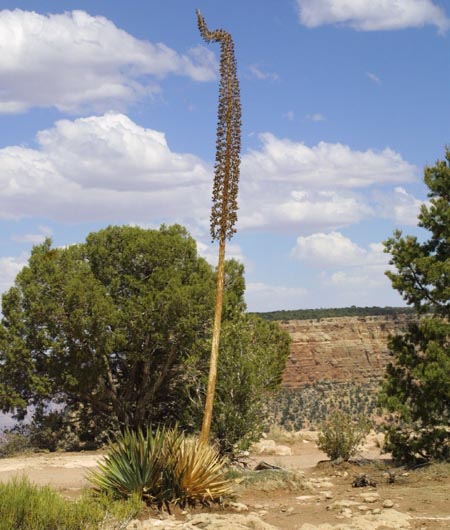
|
A yucca plant. These succulents live for years, gathering and storing
up resources, so that they can bloom, sending a stalk up several feet. The
stalk can grow up to several inches each day. After sending up the stalk,
and blooming, the plant is able to breed, and then die. |
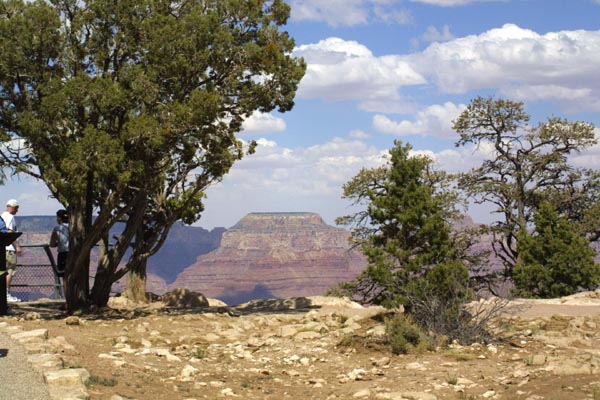
|
Plants and people seem to gather at the edge to overlook the banded
structures inside the canyon. |
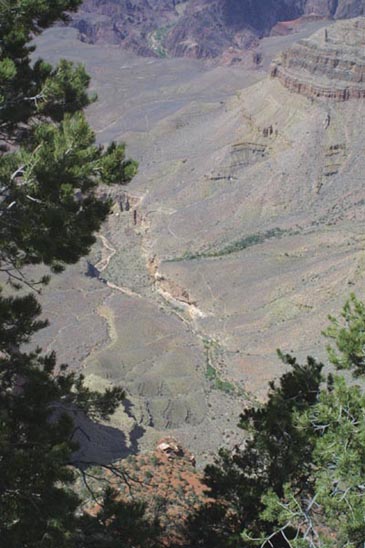
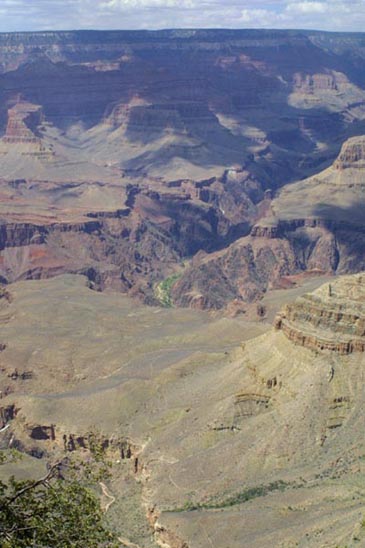
|
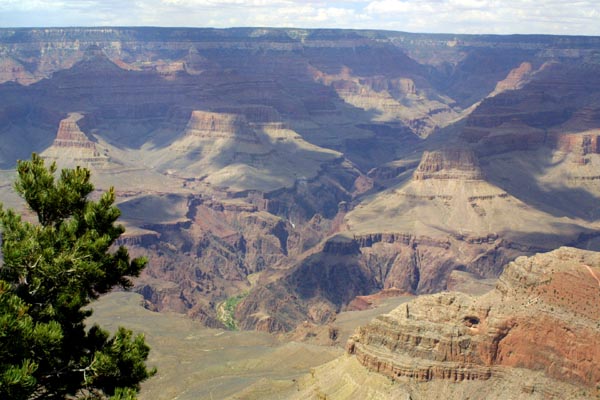
|
Assorted views of the canyon bottomlands show green were water occasionally
flows. We visited during a particularly hot and dry time. There were constant
warnings out about heat, and visitors were recommended not to travel out
into the canyon floor. There were also fire warnings out, camp fires were
prohibited, and even smoking was restricted (for fire, rather than health
reasons). |
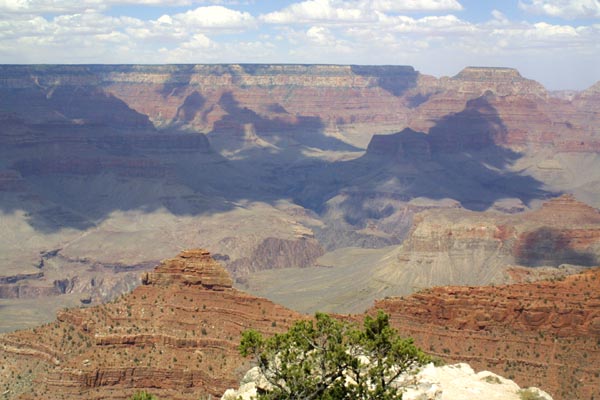
|
Yet another view of shadowed canyon lands. The haze hints at the heat.
Actually, the whole place was very dry, as well as being very hot. At least
some of the haze was from several far off, but huge, fires ravaging the
area. |
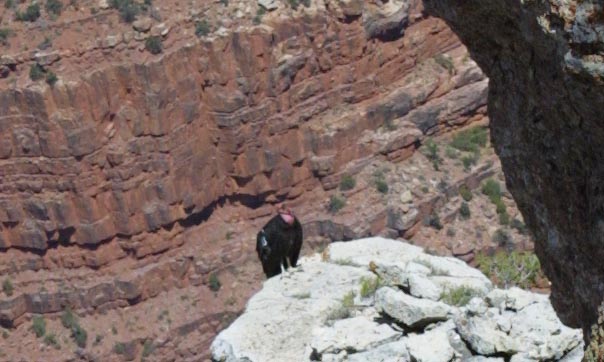
|
This is a California Condor perching on some rocks just below the
canyon rim. Conservationism aside, these are not pretty birds. They are
carrion eaters, essentially vultures, which cruise the sky looking for carcasses
on which to feed. |
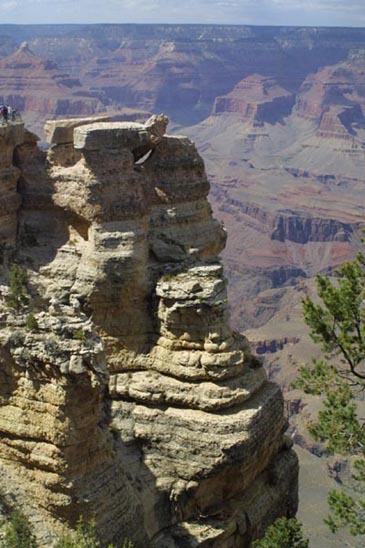
|
An oddly shaped structure begins to separate itself from the canyon
wall. Water does strange things to rock out here. |